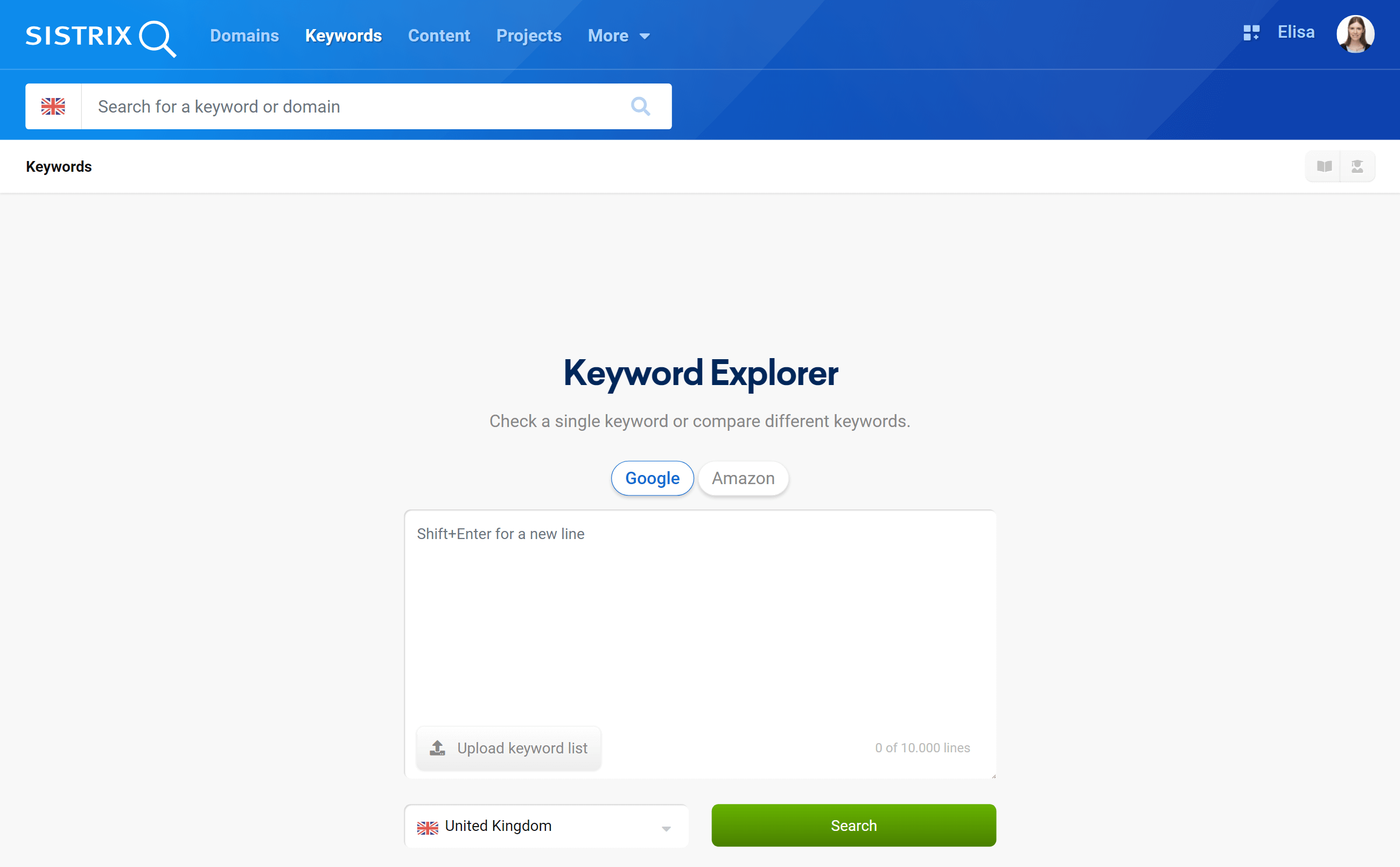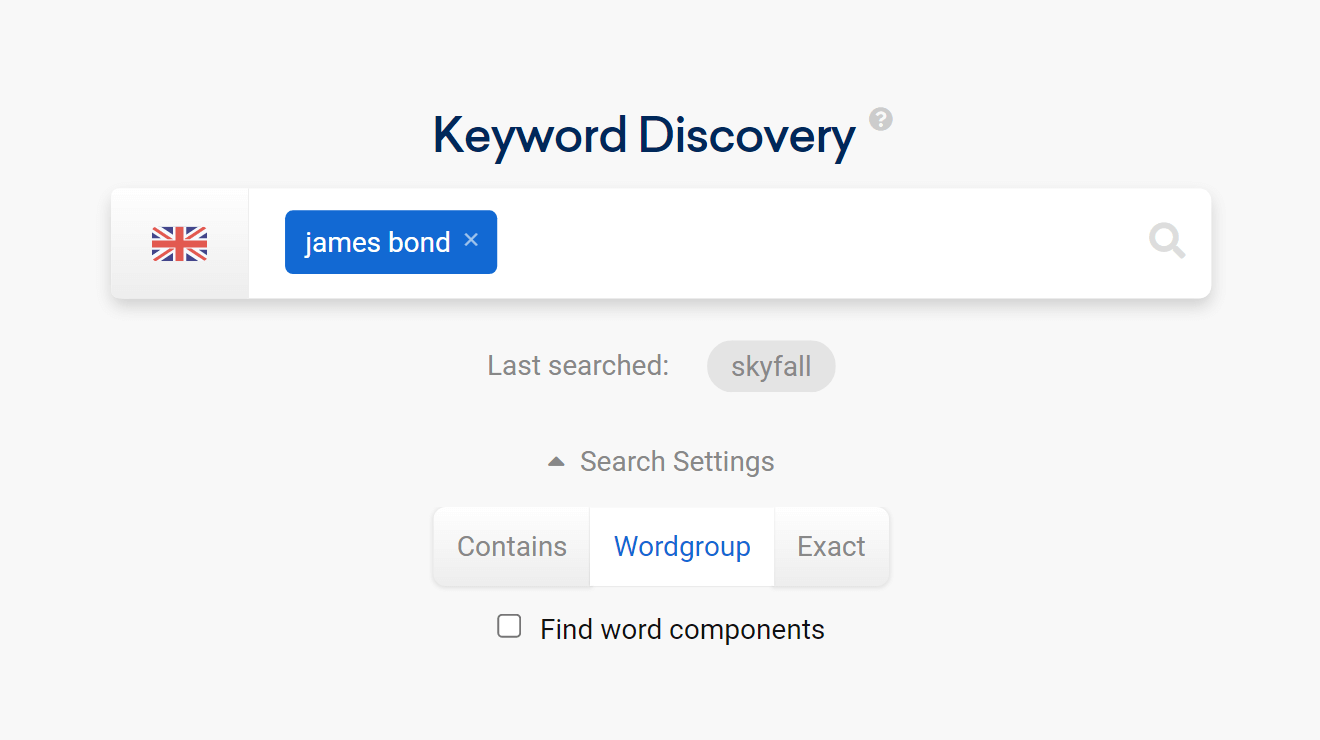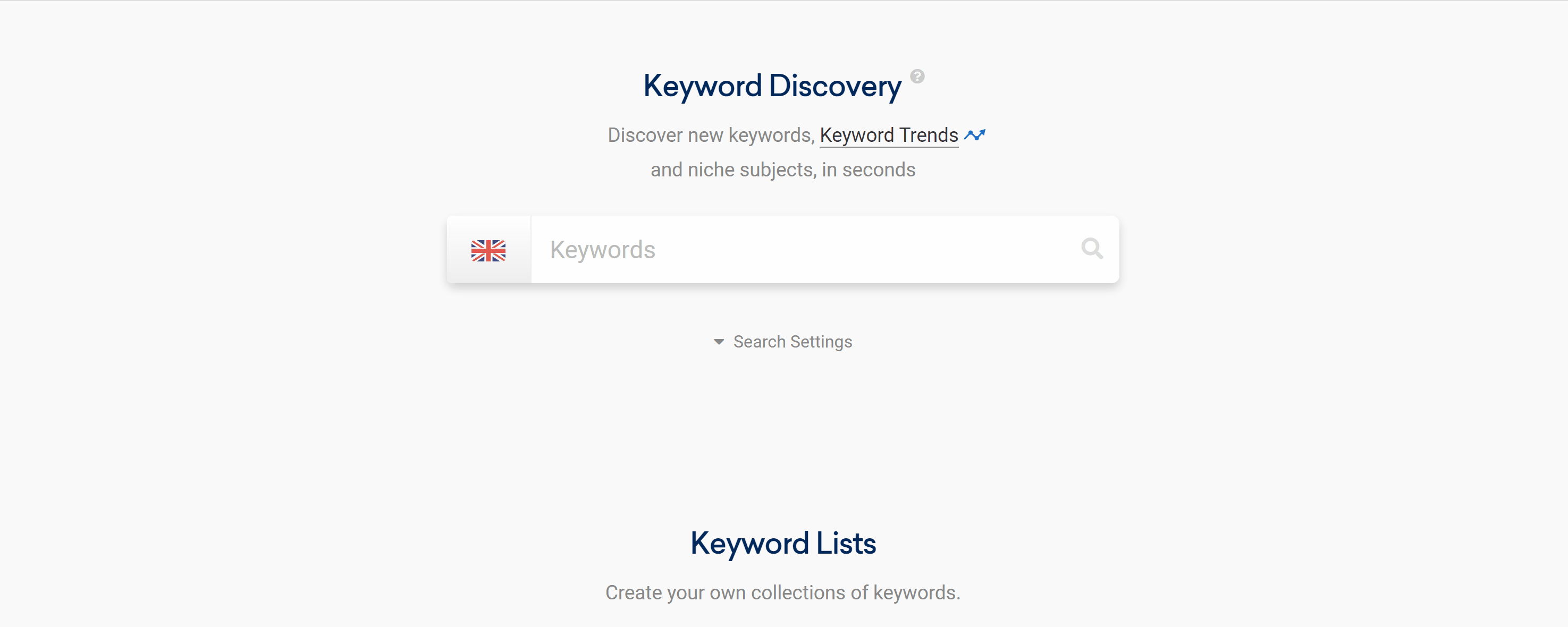The overview page “Keywords” offers you efficient, useful tools and features for your keyword research. Here’s a quick and useful explanation of them.

In the header of SISTRIX, you will find links to the different overview pages categorised by topic.
Note that this section will not allow you to analyse a specific domain: for that, use the search bar instead.
Keyword Explorer
If you want to find out specific details about a keyword, for example its monthly search volume, related terms, search intent and more, the “Keyword Explorer” tool is the right choice for you.
The Keyword Explorer tool can be used in two different ways.
If you type one keyword, select the country from the dropdown menu and click on “Search”, you’ll land on the overview page of that keyword, where you’ll find all the SERPs and SEO details about that specific term. In this handbook you’ll find more specific information about this section.
Additionally, you can click on “Analyse multiple keywords together” to open more search options. If you add more than one keyword or upload a keyword list, the tool will compare the KPIs for all keywords, showing your their search volume, competition level, annual trend and CPC value.
To deepen your analysis, you can add the keywords to an Onpage project by ticking the little box in front of the keywords. Alternatively, you can add the keywords to a list and discover even more data (like their competitive environment, search intent, traffic forecast and more). This option will be available after selecting the corresponding menu points on the left.
The same process applies to the Amazon data, available by selecting the label “Amazon” right above the box. In that case, you’ll reach the Amazon keyword overview when typing a keyword, or you’ll have the possibility to create an Amazon list if you add multiple keywords.
Keyword Discovery

Keyword Discovery is the door to accessing all the keyword knowledge and information in the Toolbox. You enter one or more keywords to start and we’ll extend these keywords using similar terms and sort the results so that they are easy to understand. For a full how-to explanation, see our keyword discovery tutorial.
When typing in a keyword, the tool will automatically suggest similar terms together with their average monthly search queries.
Keyword Trends

Within the Keyword Discovery section you’ll find another useful feature called “Keyword Trends”. Thanks to this, you’ll be able to discover keywords that are currently being searched more frequently than usual.
Hover the mouse over “Keyword Trends” to see an overview of the Top 5 trends for the country you are analysing.
If you click on “Show complete list”, the tool will bring you to a separate page where you can find a list of the Top 100 trends ordered by search volume. The trends are updated daily.
Click on a specific keyword to reach its overview page and discover more SEO-data. If you prefer a quicker overview, click on the button that appears when you hover the mouse over the keyword: a window on the right will open and give you concise details about its search volume, competition level, search intent and SERP features.
Keyword Lists
Lists in Toolbox help you to group, manage and analyse sets of domains or keywords.
In this section you’ll see an overview of all your lists with their date of creation. Moreover, you can create a new list by clicking on the first button.
To find out more about all the different functionalities offered by lists, you can read this handbook.
Further Functions
Unused keywords
Find out with the unused keywords, which keywords your competitors rank for that you do not rank with yet. To start the comparison simply enter your domain and the domains of your competitors, then click “Apply”.
Find out more about this function in this handbook.
Traffic Potential
Here, you can discover the keywords, for which the domain you are analysing does not rank on the first page of Google but could make it there with a good optimisation.
The explanation of this function can be found in this handbook.
Common Keywords
The higher the amount of common keywords that you have with your competitors, the more dangerous they can become for your own rankings. The other way around it is of course also possible to aim for a higher keyword coverage of the keywords used by the competitor. Enter up to four competitors to find out, which keywords they share with your domain.
Find out more about this function in this handbook.